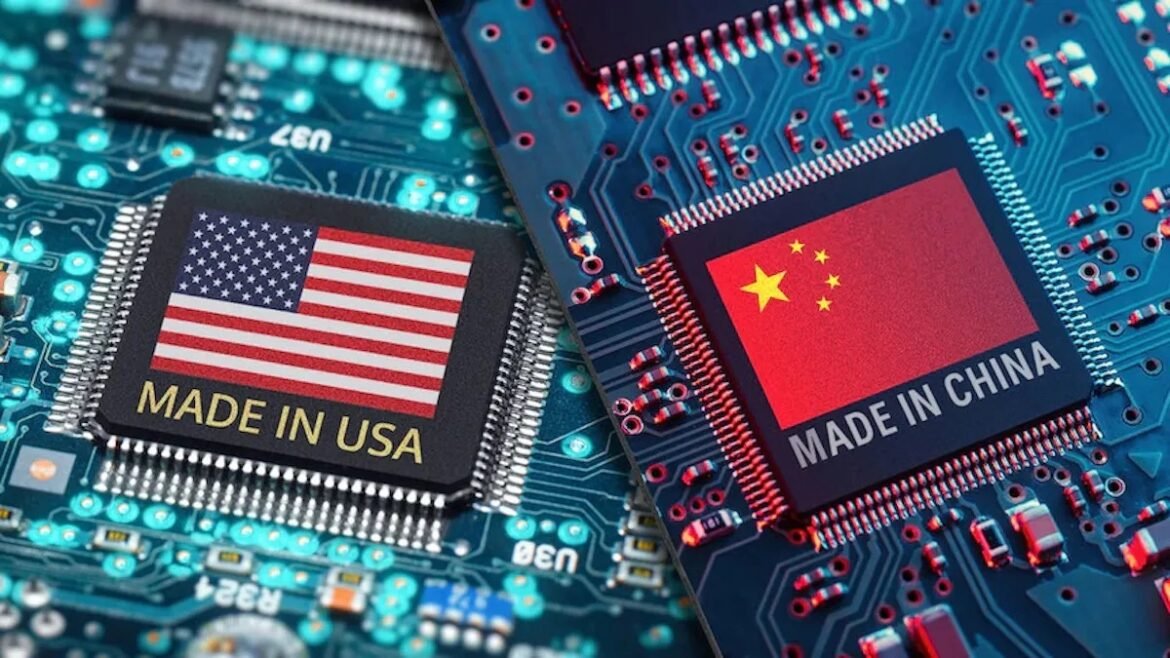As the United States and its allies increase their efforts to restrict China’s access to advanced semiconductor processors, experts warn that the measures could have a negative impact on both Beijing’s development and US companies.
There are numerous indications of the escalating conflict between the United States and China, from balloons in the sky to videos on TikTok. But nowhere is this more evident than on semiconductors, the microscopic silicon wafers. The United States and its allies have redoubled their efforts to pressure China over its semiconductor industry after that country’s May 23 announcement that it will put export restrictions on 23 types of chipmaking technology, including advanced semiconductor production equipment. In July, the measure will go into effect.
The action follows similar steps taken by the United States and the Netherlands in recent months, as Washington and its allies attempt to restrict China’s access to advanced semiconductor chips and equipment.
Semiconductors, also known as microchips, are small technological components that fuel everything from microwaves to military weapons. Microchips are the vital organs of a modern economy. Even though the industry is worth more than $580 billion, this number understates their significance to the global economy. Without them, the global economy would come to a screeching halt, as their existence powers products and processes worth several trillion dollars.
The semiconductor ban by US and it’s allies on China and it’s impact
Covid encountered scarcity when working from home increased the demand for computers just as the supply of chips dried up. This was exacerbated when Beijing and Washington engaged in a “zero-sum” conflict against Chinese chipmakers. The US government has implemented a series of export controls on advanced semiconductor processors since October of last year. Since then, Washington has been lobbying the Netherlands and Japan to join its efforts to limit China’s semiconductor industry’s growth.
Now, as a result of Japan’s export control measures relating to advanced semiconductor manufacturing, China’s semiconductor industry confronts significant challenges. Beijing has opposed the move strongly, citing violations of free trade and international trade regulations and designating it an abuse of export control measures.
China’s semiconductor industry could be stifled by Japan’s measures, limiting its ability to develop new technologies for advanced semiconductor processors. Experts warn that China may be limited to the 14 nanometers (nm) process, making it challenging to advance beyond this standard without access to advanced equipment from Japan, the United States, or the Netherlands.
The nanometer node is essential in chip manufacturing technology, with the most advanced chips at around 3 nm, predominantly for smartphones, and more mature chips at 28 nm and above, used in automobiles and home electronics.
The effect of Japan’s export restrictions extends beyond the semiconductor industry, affecting associated industries and consumer electronics manufacturers. The dominant players in the semiconductor value chain, including the United States, Japan, South Korea, Taiwan, and the Netherlands, are inclined to collaborate with the United States, potentially forging alliances with long-term consequences.
China’s move on being “self-resilient”
China intends to increase its capacity for sophisticated semiconductors for economic resilience and military readiness. During his visit to Guangdong Province, Chinese leader Xi Jinping emphasized the significance of self-reliance in science and technology, urging Chinese businesses to increase innovation capacity and make advancements in core technologies. However, the United States is using trade instruments to undermine these initiatives.
The number of registered companies in China’s semiconductor industry will increase from 1,300 in 2011 to 22,800 in 2020, a significant increase from 2011. But this expansion has primarily involved the production of larger, less technologically advanced semiconductors, whereas the most advanced chips measure five nanometers or less. China’s industry is dominated by processors with dimensions of 24 nanometers or greater.
Analysts doubt China’s Semiconductor Manufacturing International Corporation’s (SMIC) capacity to scale up production despite achieving a significant technological advancement by producing a 7-nanometer chip last year. China is far from achieving its aim of being 70% self-sufficient in semiconductors by 2025, according to estimates.
China faces a significant challenge in achieving complete independence in semiconductor manufacturing and research. It is anticipated that the current export control measures will hinder China’s pursuit of complete self-sufficiency in the semiconductor industry, delaying its goals and posing persistent obstacles.
US to face repercussions too
Concerns have also been voiced by US semiconductor firms and foreign governments regarding the potential consequences of coordinated export controls. Jensen Huang, chief executive officer of U.S. chipmaker Nvidia, warned that the U.S. risks harming its technology sector by imposing trade restrictions on China. He emphasized China’s significance as a market for the technology industry and implied that if China is unable to purchase from the United States, it will develop its own capabilities.
South Korea has urged the United States to review the criteria for semiconductor subsidy eligibility, as it concerns that restrictions on the construction of new facilities in countries such as China could be detrimental to South Korean semiconductor companies.
American businesses and citizens have suffered collateral damage as a consequence of US-led measures. Companies are either banned from selling equipment to Chinese firms or prohibited from working for blacklisted Chinese companies. Many U.S. corporations have substantial business interests in China, and semiconductors are a dual-use technology, making it difficult to achieve a strategic equilibrium.
While export control measures have resulted in some collateral damage, special licenses have the potential to facilitate trade between US and Chinese semiconductor companies. Approving such licenses could mitigate some pressure and allow semiconductor and manufacturing equipment exports to China to continue. Despite the need for caution, there could be opportunities for dialogue and flexibility in the implementation of export control measures in order to mitigate the negative impact on U.S. businesses without forsaking them entirely.


